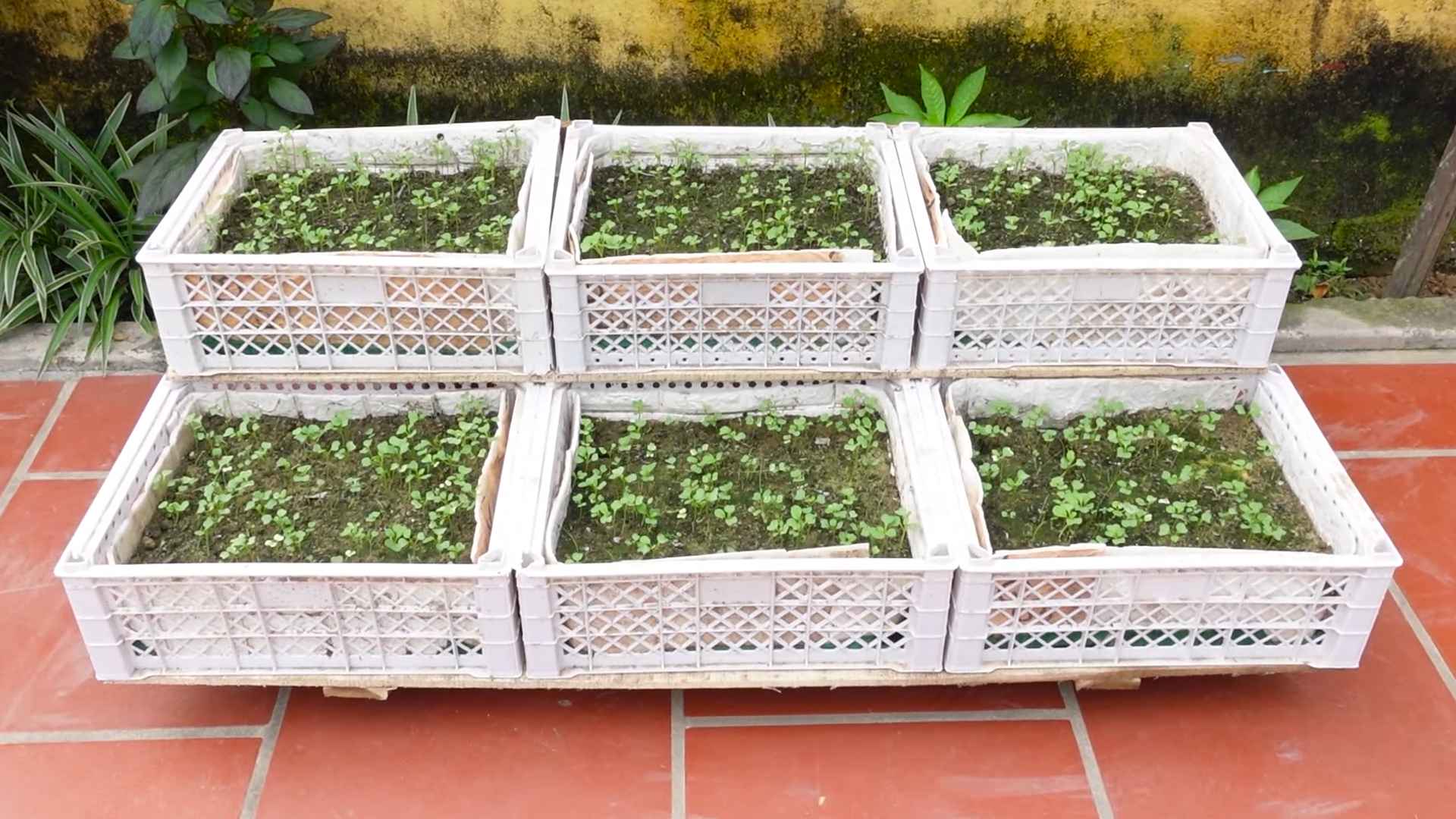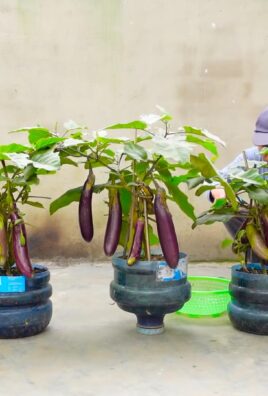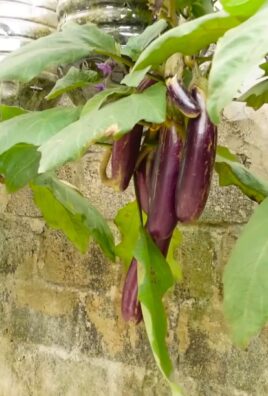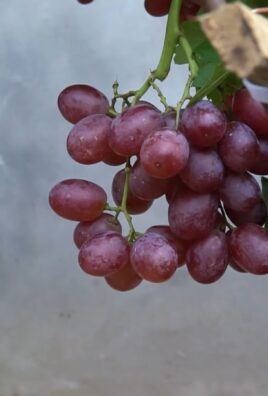Easy vegetable growing family projects are a fantastic way to connect with nature, teach valuable life skills, and enjoy the freshest, most delicious produce right from your own backyard! Have you ever dreamed of strolling through your garden, plucking a ripe tomato still warm from the sun, and knowing exactly where it came from? I know I have! For centuries, cultivating our own food has been a cornerstone of human civilization, from ancient Roman kitchen gardens to the victory gardens of wartime eras. It’s a tradition that connects us to the earth and provides a sense of accomplishment that’s hard to beat.
But let’s be honest, the idea of starting a vegetable garden can feel a little daunting, especially when you’re juggling work, family, and everything else life throws your way. That’s where these DIY tricks and hacks come in! I’m going to share some simple, effective strategies that will make easy vegetable growing family friendly and totally achievable, even if you’re a complete beginner. We’ll explore clever shortcuts, budget-friendly solutions, and time-saving techniques that will transform your backyard into a thriving edible oasis. Get ready to ditch the grocery store produce aisle and embrace the joy of homegrown goodness!

Creating Your Own Family-Friendly Vegetable Garden: A Beginner’s Guide
Hey everyone! I’m so excited to share my experience with creating a super easy and rewarding vegetable garden that the whole family can enjoy. Gardening can seem daunting, but trust me, with a little planning and effort, you can have fresh, homegrown veggies on your table in no time. This guide is designed to be simple and fun, perfect for beginners and families looking to get their hands dirty together.
Planning Your Garden
Before you even think about digging, a little planning goes a long way. This will save you time, money, and potential headaches down the road.
* Assess Your Space: Take a good look at your yard. How much sunlight does it get? Most vegetables need at least 6 hours of direct sunlight per day. Note the areas that are sunny and those that are shady. Also, consider the size of the space you’re willing to dedicate to your garden. Even a small balcony or patio can accommodate a container garden.
* Choose Your Vegetables: This is the fun part! Think about what your family loves to eat. Start with easy-to-grow vegetables like:
* Lettuce: Grows quickly and can be harvested multiple times.
* Radishes: Super fast growers, perfect for impatient little gardeners.
* Cherry Tomatoes: Prolific and delicious, great for snacking.
* Zucchini: A garden staple, just be prepared for a lot of it!
* Green Beans: Easy to grow and fun to pick.
* Peppers: Bell peppers and other sweet peppers are relatively easy.
* Spinach: Another leafy green that grows quickly.
* Decide on Garden Type: You have a few options:
* In-Ground Garden: Directly planting into the soil. Requires tilling or digging.
* Raised Beds: Building a frame and filling it with soil. Great for drainage and easier on the back.
* Container Garden: Using pots, containers, or even repurposed items. Perfect for small spaces.
* Sketch a Layout: Draw a simple map of your garden space. This will help you visualize where each vegetable will go. Consider the mature size of each plant and space them accordingly. Taller plants should be placed where they won’t shade smaller ones.
* Consider Companion Planting: Some plants help each other grow! For example, basil repels pests that bother tomatoes. Marigolds are also great for pest control. Do a little research on companion planting to maximize your garden’s potential.
Gathering Your Supplies
Now that you have a plan, it’s time to gather your supplies. Here’s a list of essentials:
* Seeds or Seedlings: You can start seeds indoors or buy seedlings from a local nursery. Seedlings are a good option for beginners as they give you a head start.
* Soil: Use good quality garden soil or potting mix, depending on your garden type. Avoid using soil from your yard directly, as it may not have the nutrients your vegetables need.
* Gardening Tools:
* Trowel: For digging small holes.
* Hand Rake: For smoothing soil.
* Watering Can or Hose: For watering your plants.
* Gardening Gloves: To protect your hands.
* Shovel: For larger digging tasks (if creating an in-ground or raised bed garden).
* Fertilizer: A balanced fertilizer will help your plants grow strong and healthy.
* Mulch: Straw, wood chips, or shredded leaves can be used to suppress weeds and retain moisture.
* Plant Markers: To label your plants (especially important if you’re growing multiple varieties).
* Containers (if doing a container garden): Choose containers with drainage holes.
Preparing the Garden Bed
The preparation depends on the type of garden you chose.
In-Ground Garden Preparation
1. Clear the Area: Remove any grass, weeds, rocks, or debris from the area.
2. Till or Dig the Soil: Use a tiller or shovel to loosen the soil to a depth of at least 12 inches. This will improve drainage and allow roots to grow easily.
3. Amend the Soil: Mix in compost or other organic matter to improve soil fertility and drainage.
4. Rake the Soil: Smooth the soil surface with a rake to create a level planting bed.
Raised Bed Preparation
1. Build the Frame: Use wood, concrete blocks, or other materials to build a frame for your raised bed. A good size is typically 4 feet wide by 8 feet long.
2. Place the Frame: Position the frame in your desired location.
3. Fill the Bed: Fill the frame with a mixture of topsoil, compost, and other organic matter.
4. Level the Soil: Smooth the soil surface with a rake.
Container Garden Preparation
1. Choose Your Containers: Select containers that are appropriate for the size of the plants you want to grow. Make sure they have drainage holes.
2. Fill the Containers: Fill the containers with a good quality potting mix.
3. Water the Soil: Water the soil thoroughly before planting.
Planting Your Vegetables
Now for the most exciting part – planting!
1. Read the Seed Packet or Plant Label: Follow the instructions on the seed packet or plant label for spacing and planting depth.
2. Dig a Hole: Dig a hole that is large enough to accommodate the roots of the seedling or the seed.
3. Plant the Seedling or Seed: Gently remove the seedling from its container and place it in the hole. If planting seeds, follow the instructions on the seed packet for planting depth.
4. Cover the Roots: Cover the roots with soil and gently firm the soil around the plant.
5. Water Thoroughly: Water the plants thoroughly after planting.
6. Add Mulch: Apply a layer of mulch around the plants to suppress weeds and retain moisture.
Caring for Your Garden
Once your vegetables are planted, it’s important to provide them with the care they need to thrive.
* Watering: Water your plants regularly, especially during dry periods. Water deeply and less frequently, rather than shallowly and often. Aim to water at the base of the plants to avoid wetting the leaves, which can lead to fungal diseases. Early morning is the best time to water.
* Fertilizing: Fertilize your plants every few weeks with a balanced fertilizer. Follow the instructions on the fertilizer label.
* Weeding: Remove weeds regularly to prevent them from competing with your vegetables for nutrients and water. Hand-pulling weeds is usually the best option.
* Pest Control: Keep an eye out for pests and diseases. There are many organic pest control methods you can use, such as insecticidal soap or neem oil. You can also attract beneficial insects to your garden by planting flowers like marigolds and sunflowers.
* Pruning: Some vegetables, like tomatoes, benefit from pruning. Remove suckers (the small shoots that grow between the main stem and the branches) to encourage fruit production.
* Support: Provide support for climbing vegetables like tomatoes and cucumbers. Use stakes, cages, or trellises.
Harvesting Your Vegetables
The best part of gardening is harvesting your own fresh vegetables!
* Harvest at the Right Time: Harvest your vegetables when they are ripe and ready to eat. Check the seed packet or plant label for information on when to harvest each vegetable.
* Handle with Care: Handle your vegetables gently to avoid bruising them.
* Enjoy Your Harvest: Eat your vegetables fresh or use them in your favorite recipes. You can also preserve your harvest by canning, freezing, or drying.
Tips for Gardening with Kids
Gardening with kids can be a fun and educational experience for the whole family. Here are a few tips to make it enjoyable:
* Give Kids Their Own Space: Let kids have their own small plot or container to plant and care for.
* Choose Easy-to-Grow Vegetables: Start with vegetables that are easy to grow and quick to harvest, like radishes and cherry tomatoes.
* Make it Fun: Turn gardening into a game. Let kids decorate plant markers, build a scarecrow, or create a fairy garden.
* Teach Them About Nature: Use gardening as an opportunity to teach kids about plants, insects, and the environment.
* Be Patient: Gardening takes time and patience. Don’t get discouraged if things don’t go perfectly. Just enjoy the process and learn from your mistakes.
Troubleshooting Common Problems
Even with the best planning, you might encounter some problems in your garden. Here are a few common issues and

Conclusion
So, there you have it! This simple DIY trick for easy vegetable growing for families is more than just a shortcut; it’s a gateway to a rewarding experience that brings you closer to nature and provides fresh, healthy food right from your backyard. We’ve shown you how to bypass some of the common hurdles that often discourage beginner gardeners, making the process accessible and enjoyable for everyone, regardless of experience level.
Think about it: no more struggling with complicated seed starting indoors, no more worrying about transplant shock, and no more battling weeds in endless rows. This method streamlines the entire process, allowing you to focus on the joy of watching your vegetables grow and thrive. It’s a fantastic way to teach children about where their food comes from, fostering a lifelong appreciation for healthy eating and sustainable living.
But the beauty of this DIY approach lies in its adaptability. Feel free to experiment with different types of containers. While we’ve suggested using readily available materials like recycled plastic containers or fabric grow bags, you could also explore raised beds or even repurposed items like old tires or bathtubs. The possibilities are endless!
Consider also varying the types of vegetables you grow. While we’ve focused on beginner-friendly options like lettuce, spinach, and radishes, don’t be afraid to branch out and try other vegetables that your family enjoys. Herbs like basil, mint, and chives are also excellent choices for container gardening and can add a burst of flavor to your meals. You can even try companion planting, pairing vegetables that benefit each other, such as planting basil near tomatoes to deter pests.
Furthermore, think about the location of your container garden. While most vegetables need at least six hours of sunlight per day, some varieties can tolerate partial shade. Observe your garden throughout the day to determine the best placement for each type of vegetable. You can also use shade cloth to protect your plants from the intense afternoon sun during the hottest months.
This DIY trick is not just about growing vegetables; it’s about creating a sustainable and enjoyable gardening experience for the whole family. It’s about connecting with nature, learning new skills, and enjoying the fruits (and vegetables!) of your labor. It’s about fostering a sense of accomplishment and pride in creating something beautiful and beneficial.
We strongly encourage you to give this DIY trick a try. You’ll be surprised at how easy and rewarding it is to grow your own vegetables. And once you’ve experienced the joy of harvesting your own fresh produce, you’ll never look at gardening the same way again.
Don’t forget to share your experiences with us! We’d love to hear about your successes, your challenges, and any variations you’ve tried. Post photos of your container gardens on social media using #EasyFamilyGarden and tag us so we can see your amazing creations. Let’s inspire others to embrace the joy of easy vegetable growing for families and create a community of thriving home gardeners! We believe that everyone can grow their own food, and this DIY trick is the perfect starting point. So, get your hands dirty, have fun, and enjoy the delicious rewards of your labor!
Frequently Asked Questions (FAQ)
What kind of soil should I use for my container garden?
The best soil for container gardening is a well-draining potting mix. Avoid using garden soil, as it can become compacted in containers and doesn’t provide adequate drainage. Look for a potting mix that contains ingredients like peat moss, perlite, and vermiculite. These ingredients help to retain moisture while also ensuring good drainage. You can also amend your potting mix with compost to add nutrients and improve soil structure. A good quality potting mix is essential for healthy plant growth in containers.
How often should I water my container garden?
Watering frequency depends on several factors, including the type of vegetables you’re growing, the size of your containers, the weather conditions, and the type of potting mix you’re using. Generally, you should water your container garden when the top inch of soil feels dry to the touch. During hot, dry weather, you may need to water your plants daily, or even twice a day. Be sure to water thoroughly, until water drains out of the bottom of the container. Avoid overwatering, as this can lead to root rot. A good way to check if your plants need water is to stick your finger into the soil. If it feels dry, it’s time to water.
What kind of fertilizer should I use?
Vegetables grown in containers need regular fertilization to thrive. You can use either a liquid fertilizer or a slow-release granular fertilizer. Liquid fertilizers are applied directly to the soil and provide a quick boost of nutrients. Slow-release fertilizers release nutrients gradually over time, providing a more consistent supply of nutrients. Choose a fertilizer that is specifically formulated for vegetables and follow the instructions on the label. Organic fertilizers, such as compost tea or fish emulsion, are also excellent choices. Fertilize your plants every two to four weeks, depending on the type of fertilizer you’re using.
How much sunlight do my vegetables need?
Most vegetables need at least six hours of sunlight per day to thrive. However, some vegetables, such as lettuce, spinach, and kale, can tolerate partial shade. Observe your garden throughout the day to determine the best location for each type of vegetable. If you don’t have enough sunlight, you can supplement with grow lights. Place your containers in a location that receives direct sunlight for at least six hours a day. If you live in a hot climate, you may need to provide some shade during the hottest part of the day to prevent your plants from scorching.
What do I do about pests and diseases?
Pests and diseases can be a problem in any garden, including container gardens. To prevent problems, start with healthy plants and use a good quality potting mix. Inspect your plants regularly for signs of pests or diseases. If you find any problems, take action immediately. You can use organic pest control methods, such as insecticidal soap or neem oil, to control pests. For diseases, you can use a fungicide. It’s also important to practice good sanitation, such as removing dead leaves and debris from your garden. Companion planting can also help to deter pests and diseases. For example, planting marigolds near tomatoes can help to repel nematodes.
Can I grow vegetables in containers indoors?
Yes, you can grow vegetables in containers indoors, but you’ll need to provide adequate light. A sunny windowsill may not be enough, especially during the winter months. You’ll need to supplement with grow lights. Choose grow lights that are specifically designed for plants and provide the appropriate spectrum of light. You’ll also need to ensure that your plants have good air circulation and are not overwatered. Some vegetables that grow well indoors include lettuce, spinach, herbs, and peppers.
What are some good vegetables for beginner container gardeners?
Some of the easiest vegetables to grow in containers include lettuce, spinach, radishes, carrots, bush beans, and herbs. These vegetables are relatively low-maintenance and don’t require a lot of space. They also mature quickly, so you’ll be able to harvest them in a relatively short amount of time. Start with these easy-to-grow vegetables and then gradually expand your garden as you gain experience.
How do I know when my vegetables are ready to harvest?
The best way to know when your vegetables are ready to harvest is to check the seed packet or plant tag. The packet will provide information on the expected maturity date and size of the vegetables. You can also use your senses to determine when your vegetables are ready to harvest. For example, lettuce is ready to harvest when the leaves are large enough to eat. Radishes are ready to harvest when they are about an inch in diameter. Tomatoes are ready to harvest when they are fully colored and slightly soft to the touch.
Can I reuse the potting mix from my container garden?
You can reuse potting mix from your container garden, but it’s important to amend it with fresh compost and fertilizer. Over time, potting mix can become depleted of nutrients and compacted. Adding compost will help to replenish nutrients and improve soil structure. You may also need to add some perlite or vermiculite to improve drainage. Before reusing potting mix, remove any dead roots or debris. You can also sterilize the potting mix by baking it in the oven at 180 degrees Fahrenheit for 30 minutes. This will help to kill any harmful pathogens.
What if I don’t have a lot of space for a container garden?
Even if you don’t have a lot of space, you can still grow vegetables in containers. Consider using vertical gardening techniques, such as hanging baskets or wall planters. You can also grow vegetables in small containers on a balcony or patio. Choose compact varieties of vegetables that are specifically bred for container gardening. Even a small container garden can provide you with fresh, healthy vegetables.





Leave a Comment